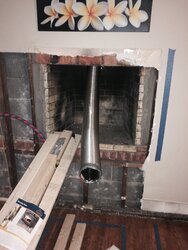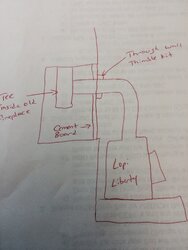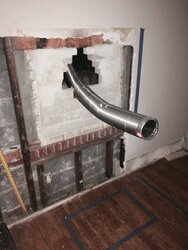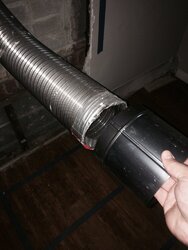Hello all,
Having a hearth built around our new wood stove and need some direction as to what would be the best way to connect the chimney liner to the black pipe coming from the stove.
I've read to use a masonry thimble...not sure if that's the correct path.
Questions:
How is the thimble attached to the stone/dura-rock?
With the thimble will there be enough access in the event I need to purchase a new liner?
What thimble should i go with? I assume a standard single wall thimble would suffice since there will be no combustables in the area.
I have a attached a picture for reference. We will be blocking in the existing fireplace and we will be going with a Lopi Liberty free standing stove.

Thank you
Having a hearth built around our new wood stove and need some direction as to what would be the best way to connect the chimney liner to the black pipe coming from the stove.
I've read to use a masonry thimble...not sure if that's the correct path.
Questions:
How is the thimble attached to the stone/dura-rock?
With the thimble will there be enough access in the event I need to purchase a new liner?
What thimble should i go with? I assume a standard single wall thimble would suffice since there will be no combustables in the area.
I have a attached a picture for reference. We will be blocking in the existing fireplace and we will be going with a Lopi Liberty free standing stove.

Thank you
Last edited by a moderator:




